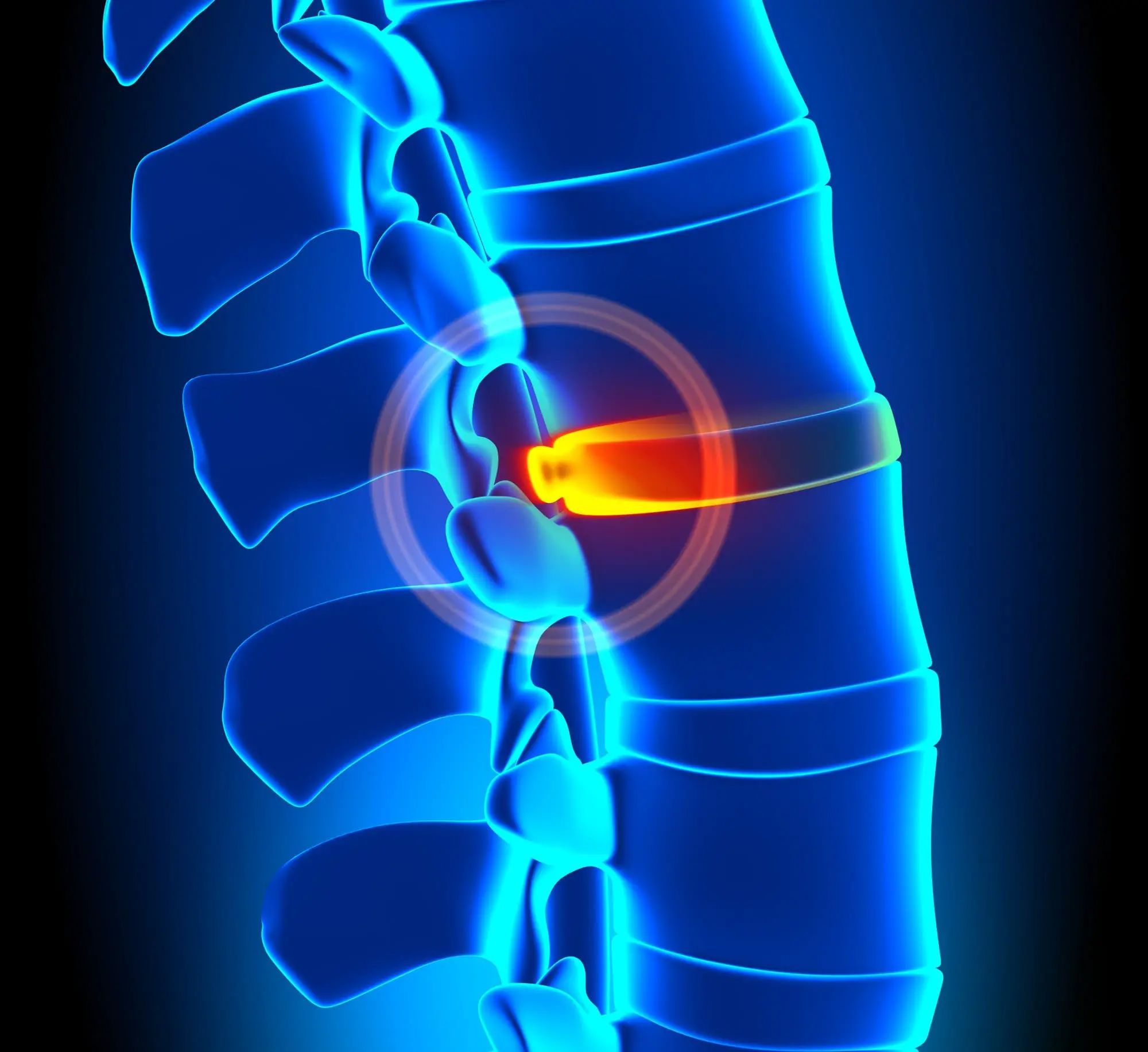The human body has small discs that sit between the vertebrae of the spine. Their role is to absorb shocks. When you develop a bulging disc, you can find yourself in severe pain.
Most often, bulging discs surface in the lower back. This can happen when a weak or deteriorated disc begins to swell through a small crevice in your spine. Over time, it begins to slip further away from its normal position.
Typically, this process takes place over a period of years.
As the disc continues to move out of place, the liquid-like nucleus starts to balloon. This creates a bulging disc that could eventually lead to herniation.
If you’re facing these issues, keep reading to find out everything you need to know about the symptoms, causes, and treatment options available.
Symptoms of a Bulging Disc
Although most people with a bulging disc don’t suffer much, problems can emerge when the disc begins to affect the area around it.
One of the first symptoms you will notice is pain or tingling in your neck, shoulders, arms, hands, or fingers. You may also find yourself having a hard time walking. Your limbs may feel heavy too.
In extreme cases, you may begin to lose motor skills. If this happens, get immediate help because it could be evidence of extreme damage to the spinal cord.
Other people suffering from a bulging disc report feeling pain in their upper back, which can radiate to the chest or stomach.
This can be a signal that you have a bulging disc in the middle of your spine. It may also be an early indicator of heart, lung, or gastrointestinal failure.
A less severe symptom of this condition is muscle spasms. If they persist, they can become debilitating.
The majority of herniated discs occur in the lumbar spine. Bulging discs in this area can hit the sciatic nerve, resulting in pain that runs down the leg. Typically, the pain only affects one leg, not both.
The last symptom you need to look out for is the loss of bladder control. This would mean that your disc is compressing the cauda equina nerve bundle, which is very dangerous.
Causes and Risk Factors
If you think that you might have issues with your spine, you should take action. Don’t wait for a disc to rupture. The first step to treatment is identifying the cause of your problem.
General “Wear and Tear”
The discs in our spine become less structurally sound over time because they begin to lose water content. That makes them vulnerable to bulging and other complications.
Smoking and living a sedentary lifestyle can accelerate this process.
Weight Gain
Through our natural aging process, the discs of the spine wear down. If they become strained through weight gain, they can begin to protrude.
Injury
For most people, herniated discs occur from immediate injury, while bulging discs are slower to worsen.
However, an acute injury can cause a long-term change that disrupts your spinal system. This can lead to the development of more spinal issues down the line.
Bad Posture
Whether you are sitting, standing, or sleeping, it’s important to do so with the right posture. That means keeping your body aligned.
When sitting, make sure your back is straight and your shoulders are back. Also, try to alternate your position often. It can be helpful to use a lumbar pillow for support.
When sleeping, there are also small things you can change to improve your posture.
Try sleeping on your side with a pillow between your knees. This will give your body additional support.
Hazards at Work
If you have a job that requires you to repetitively lift, bend, stand, or drive, you’re probably at risk for a bulging disc. Make sure that you carry heavy objects correctly to prevent a swollen disc.
The safest way to pick something up is by keeping your back straight and using the strength of your legs to lift the object.
Minimally Invasive Surgery
Most doctors do not recommend surgery to those with discs that haven’t herniated. Unless it’s significantly impacting your quality of life, the risk is not worth the reward.
If you’re interested in surgery, there are minimally invasive options available these days that can have you back to work within a week. This should only be considered if everything else has failed.
Non-Surgical Treatment Options
Depending on your doctor, non-surgical treatment options will be prescribed for your disc discomfort.
One of the first rounds of defense is anti-inflammatory medicine and alternating hot and cold compresses.
When applying a compress, you should alternate every 20 minutes between hot and cold. This will keep the blood flowing well in the injured area, allowing it to heal more quickly.
Another great treatment option is massage therapy. A well-trained masseuse will be able to work the area around the disc, relieving pressure on nerves and reducing inflammation.
Physical Therapy
Although those are all effective ways to help relieve the pain from your disc, the best treatment option is physical therapy. You need to retrain your body to work in a way that won’t irritate the disc.
A physical therapist can show you the proper way to lift things and walk so that you can prevent wear and tear on the spine.
These small changes will eventually lead to pain relief and prevent you from developing a herniated disc.
Where to Find a Physical Therapist
When you have back pain, it can be difficult to get anything done. You can start to feel like you’re falling behind in many different areas of life.
Don’t spend any more time suffering! Treatment is one click away.
If you are looking for a qualified physical therapist in the Chicagoland area, contact us at Premier Physical Therapy for an appointment today.
.png)



